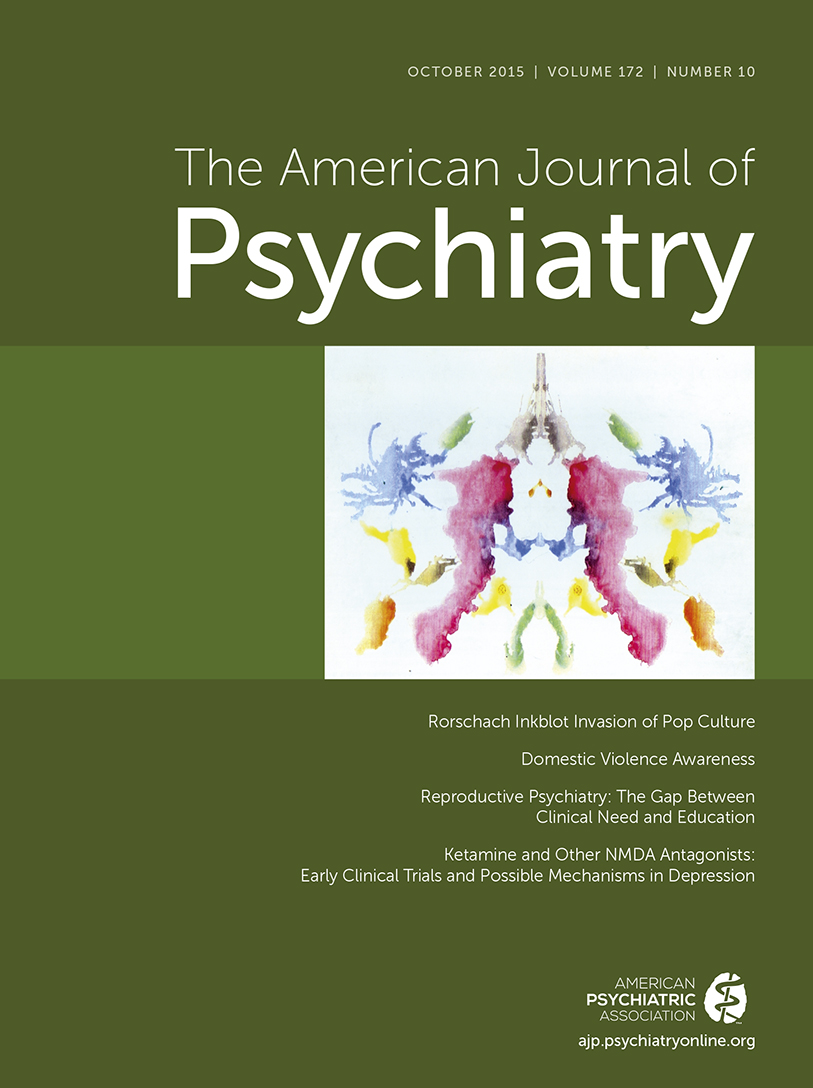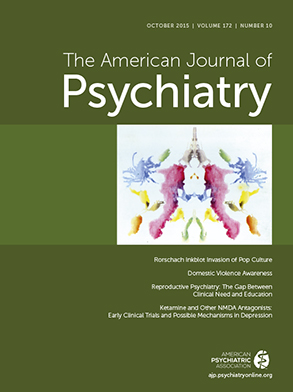Domestic or intimate partner violence is alarmingly prevalent, and, for victims, a major contributor to depression, anxiety, and other forms of mental illness. Psychological problems and psychiatric syndromes often are the antecedents of domestic violence for the perpetrator and also can be risk factors for becoming a victim. Remarkably, the two dominant mental health fields, psychiatry and clinical psychology—the ones charged with investigating and attending to the mind, brain, and behavior—are largely absent from domestic violence research and intervention.
More than one in three women and at least one in four men have been the victim of rape, physical violence, or stalking by an intimate partner (
1). However, women are far more likely than men to experience severe sexual and physical violence from a partner or to be killed by one (
1,
2). In the United States, intimate partner homicides make up between 40% and 50% of all murders of women (
3). Domestic violence crosses geographic and socioeconomic stratification, although studies indicate that lower-income women in rural communities experience higher rates of violence and, specifically, sexual abuse (
4,
5). Victims suffer from dramatic rates of depression, anxiety, and posttraumatic stress disorder, as well as substance abuse and suicidality (
6–
8). A recent study based on a representative U.S. sample of more than 25,000 adults indicated that new onsets of major mental health problems were more than twice as common among those exposed to domestic violence in the past year than among nonvictims (
9). Millions of children—as many as 15 million, according to some estimates—witness domestic violence each year (
10). For male children there is a 1,000% greater risk of reproducing this violence in their own spousal relationships (
11). A recent epidemiologic study found prior domestic violence victimization to be more strongly associated with domestic violence perpetration than any other factor (
12).
Despite its prevalence in the general population, domestic violence is underrepresented in our consulting rooms in part because victims, and especially perpetrators, rarely voluntarily self-identify or seek treatment (
8,
13,
14). Shame, guilt, and denial are obvious deterrents. These factors are often compounded by a sense of futility resulting from learned helplessness, and a profound unraveling of self-esteem (
15). More practical considerations include fears for personal security, economic codependence, and the concerns that disclosure will trigger social services engagement, particularly child protection (
8). Finally, disclosure represents a potential threat to the continuance of a romantic relationship, which, though abusive, involves emotional investment. Without experience handling domestic violence situations, clinicians can feel ill-prepared and deskilled, lacking knowledge about referral sources, emergent threats of bodily harm, and the accompanying legal and ethical obligations. This lack of presentation in clinical settings contributes to a “don’t ask” scenario (
8). Since 1986, numerous medical institutions have advocated for domestic violence screening in routine medical care (
16,
17); in 2001, the American Psychiatric Association followed suit. That same year, the American Psychological Association’s Intimate Partner Abuse and Relationship Violence Working Group launched a curriculum on domestic violence but appears to have done little to foster relevant training in clinical interventions.
Domestic violence is an exceptionally challenging clinical situation. Those in domestic violence relationships are at risk for repeating this experience, and likely have abuse or exposure to it in their backgrounds (
11,
18), adding immense complexity to treatment. The work presents unique challenges, including safety planning and patients’ minimization of abuse, which may induce feelings of helplessness in the context of significant urgency and danger (
19–
21). There now are targeted treatments for domestic violence intervention, such as Seeking Safety (
22) and Child-Parent Psychotherapy (
23), though few psychologists and psychiatrists are trained in them. Of course the question of how clinically to respond to perpetrators is a complicated one, independent of the necessary legal consequences. However, treatment and prevention programs are emerging, such as the Melissa Institute for Violence Prevention and Treatment.
Beyond the “professional counter-transference” is possibly a more personal one. Aggression is a fundamental human impulse, and violence a socially unacceptable manifestation of it. Underlying any violent interaction is the universal human struggle with aggression and its myriad complex antecedents: family and developmental history; self-esteem; power dynamics; fear of abandonment and humiliation; emotional regulation; impulse control; and the capacity for empathy, guilt, and remorse. The possibility that domestic violence exists at the far end of a continuum of aggression that includes our own moments of intense anger is difficult to accept. That we all may have something in common with perpetrators encourages our disengagement.
Our counter-transference to victimization is similar; it is threatening to empathize with the shattering paradox of domestic violence victims, experiencing violence at the hands of someone they love and whom they are unable to leave. And yet this paradox—experiencing a depth of attachment that supersedes most basic self-preservative drives—is consistent with what John Bowlby theorized, what recent child development research has demonstrated (
24), and what data from rodent models have characterized on a neurobiological level (
25).
Evoking deep, psychological concerns, we retreat from domestic violence, drawing a line in the sand between “our” behaviors and “theirs.” With this dichotomizing orientation, moral judgment replaces a psychological perspective. We tend to pity and disdain the victim, and vilify the abuser, abdicating our roles as clinicians and researchers. It is the mandate of the criminal justice system to punish people for violent actions, and of social services to support victims. As the leading fields in mind, brain, and behavior, it is our mandate to understand and rehabilitate all human behavior, without prejudice.

